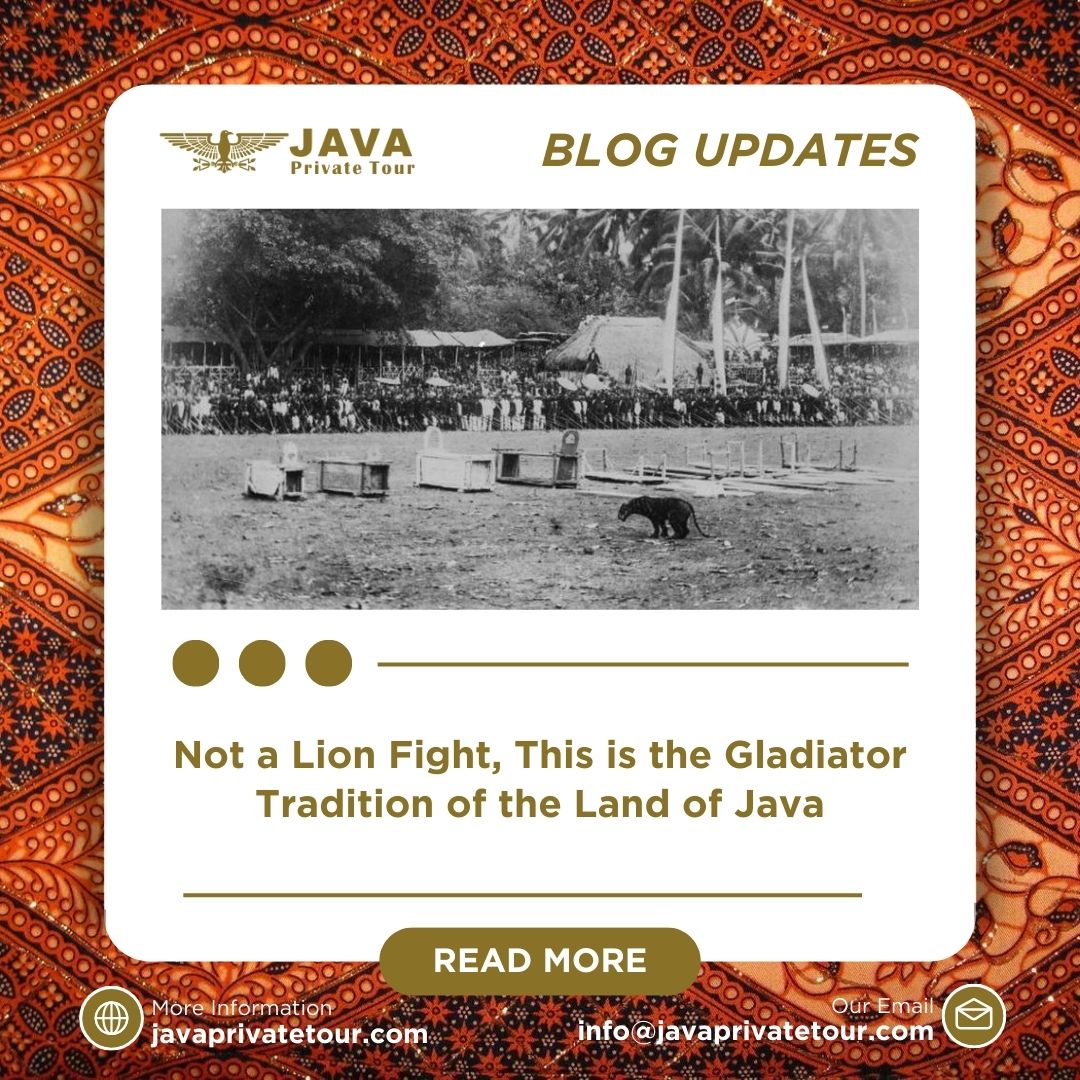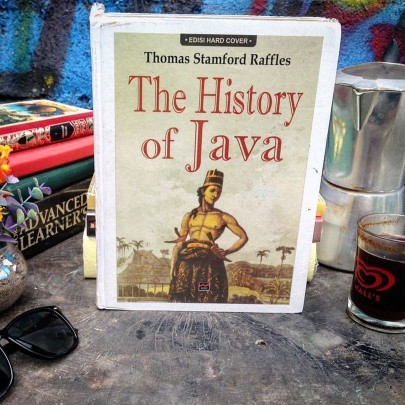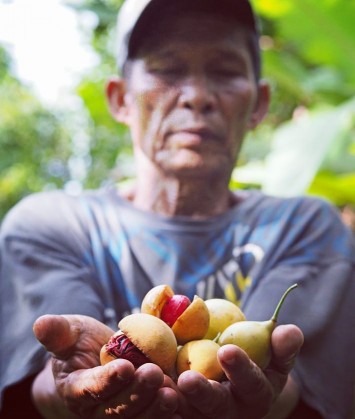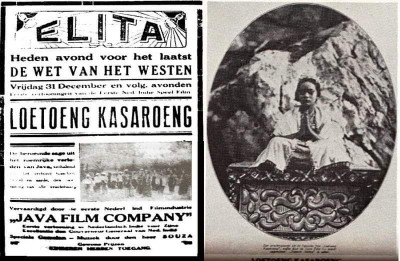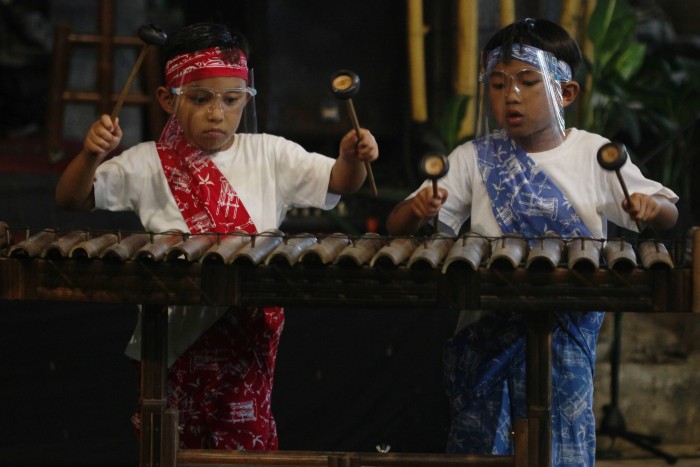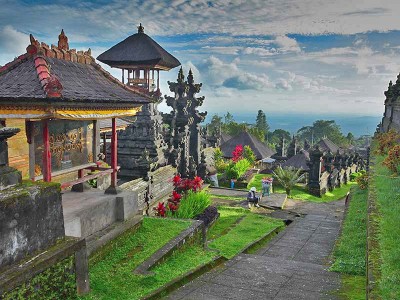javaprivatetour.com – Not many people know, but there’s a tradition reminiscent of ancient Roman gladiator games in the land of Java. The Gladiator Tradition of the Land of Java (Tradisi Gladiator Tanah Jawa) was a historical event that took place in Java, Indonesia. It involved a fight between a man and a tiger, with the man armed only with a spear. The tradition is thought to have originated in the 16th century, during the reign of the Singasari and Majapahit kingdoms.
This tradition is called Rampogan Sima or Rampogan Macan. Rampogan Sima is carried out by crowds competing to kill tigers with spears. The word “Sima” in this tradition means a large cat, which refers to the Javanese tiger.
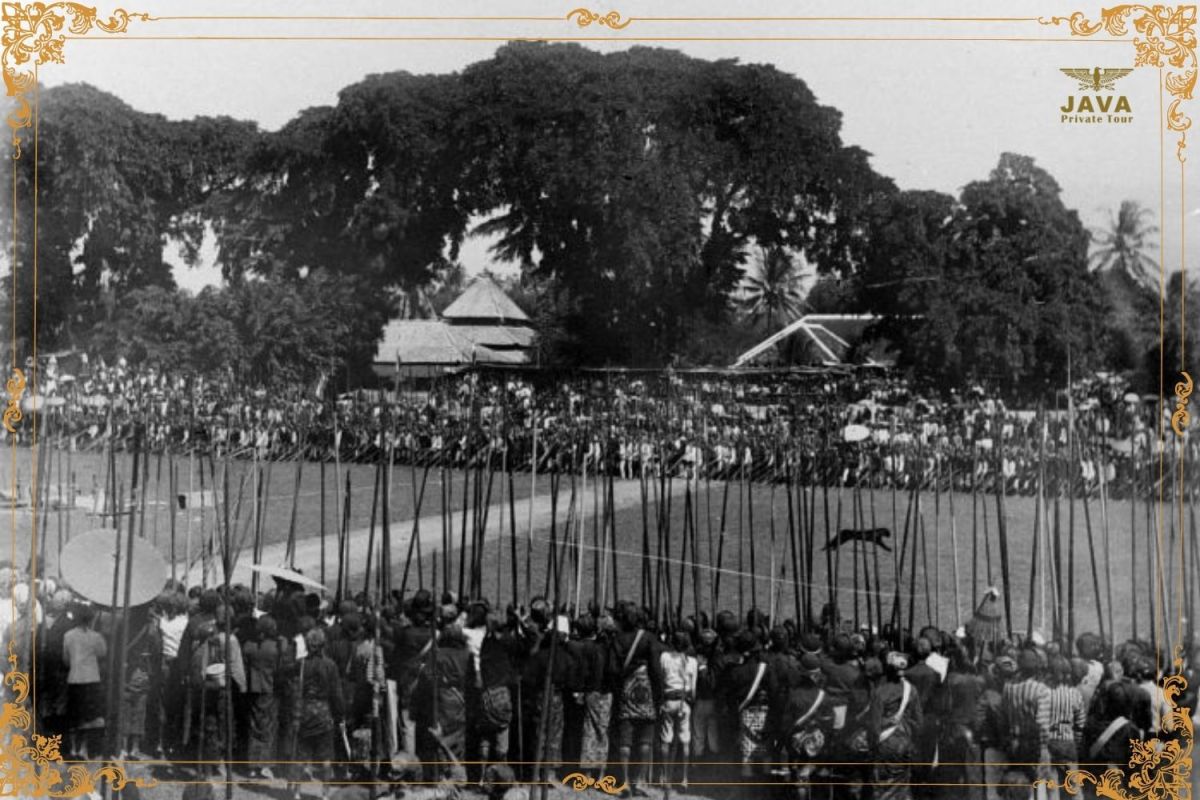
History
The first recorded instance of the Gladiator Tradition of the Land of Java took place in 1527, during the reign of Sultan Trenggono of Demak. The event was held in the alun-alun (town square) of Demak and involved a fight between a man named Ki Ageng Pengging and a tiger. Ki Ageng Pengging was a famous Javanese warrior who was known for his strength and courage. He killed the tiger with a single blow of his spear, and was rewarded with a large sum of money by the Sultan.
The Gladiator Tradition of the Land of Java became increasingly popular in the 17th and 18th centuries. It was seen as a way for the Javanese to show their strength and courage, and it was also a way to control the tiger population, which was a threat to livestock and humans.
The tradition of Rampogan Macan serves as a testament to this complex relationship. Originally a sacred ceremony, it evolved into a spectacle of entertainment, showcasing the harmony and discord between man and beast. As anthropologist Robert Wessing eloquently put it, the bond between the Javanese and the tiger was both symbiotic and fraught with tension, a delicate balance easily disrupted by unintended disturbances.
The Event
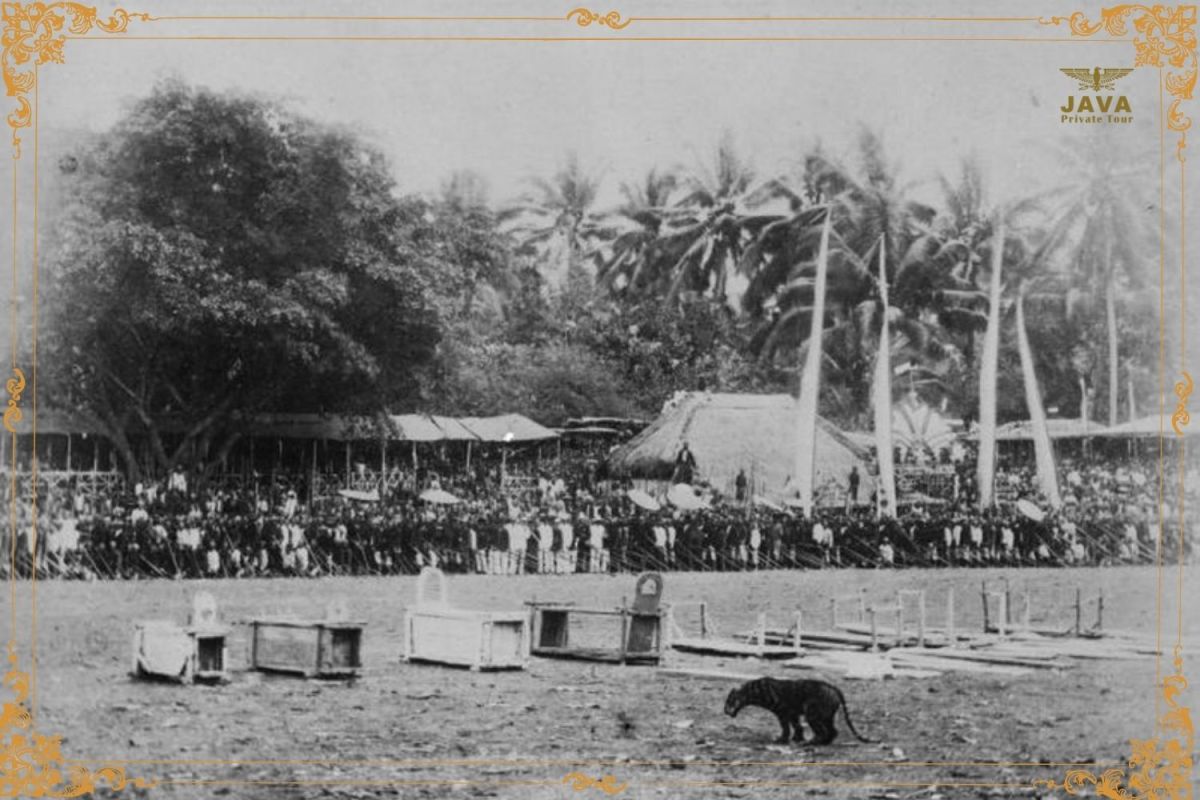
The Gladiator Tradition of the Land of Java was typically held in the alun-alun (town square) and involved thousands of spectators. The man who fought the tiger would be dressed in traditional Javanese clothing and would be armed only with a spear. The tiger would be released from a cage and the man would have to kill it in order to win the prize. One tiger could be valued at 10 to 50 Gulden.
The fights were often bloody and brutal. The tigers were often much larger and stronger than the men, and they would often fight to the death. However, the men were also skilled warriors, and they would often use their spears to great effect.
The ritual of Rampogan Macan unfolded in two acts, each with its own symbolism and significance. The first act witnessed a fierce battle between the tiger and formidable opponents such as buffalo. Yet, over time, this segment of the ceremony faded into obscurity, giving way to the main event – the showdown between the tiger and thousands of armed men wielding spears.
As described by Wessing, the atmosphere was electrifying as the tiger faced off against the human onslaught. The arena echoed with the rhythmic beats of gamelan music, heightening the drama of the encounter. Despite the odds stacked against it, there were moments when the tiger emerged victorious, escaping the clutches of its assailants.
Buffalo and Tiger Duel
It’s not just a gladiator-style duel of Javanese tigers against humans. The Rampogan Sima tradition is usually opened with a buffalo and tiger duel.
The fight between the buffalo and the tiger is depicted as thrilling and tense. Sometimes, when both animals wait to attack and don’t move, the guards will scare the tiger with fire or hit the buffalo with stinging nettles to agitate them and continue the fight.
The opening of the Rampogan Sima tradition certainly has a specific meaning. Buffaloes symbolize strength representing the Javanese people, while the symbolism of the tiger with its hot temperament and tendency to attack wildly represents Europeans.
Usually, the buffalo emerges as the winner, and most tigers that lose will die with wounds from the buffalo’s tusks in their stomachs.
The Symbolism of Rampogan Macan
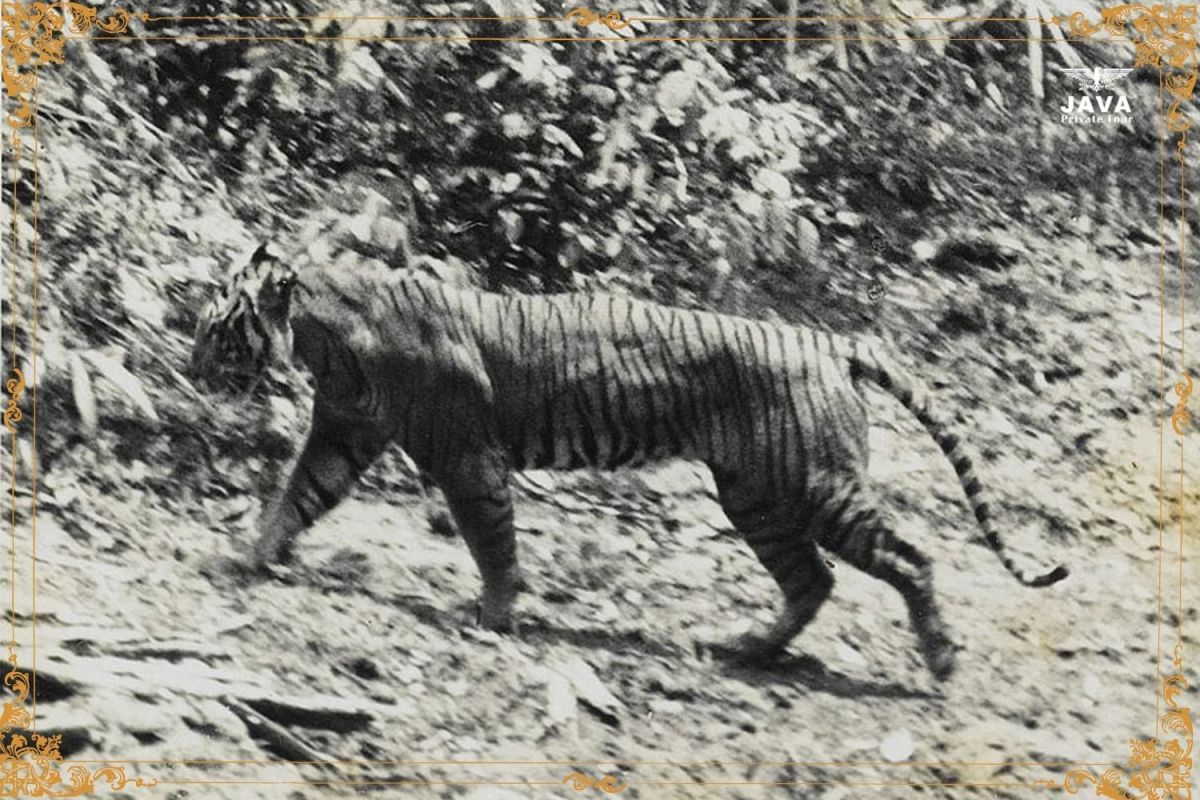
At its core, Rampogan Macan was more than just a spectacle; it was a reflection of societal dynamics and cultural beliefs. The tiger, once revered as a symbol of nobility, became synonymous with malevolence, a force to be vanquished. In some interpretations, the ritual took on political undertones, symbolizing the struggle between the Javanese and colonial powers.
Yet, beyond the theatrics, Rampogan Macan embodied a deeper truth – the precarious balance between man and nature. As forests were cleared for agriculture and hunting intensified, the Javan tiger found itself pushed to the brink of extinction. Despite conservation efforts, the last known Javan tiger was sighted in the late 1930s, its existence forever memorialized in photographs and folklore.
The End of the Tradition
The Gladiator Tradition of the Land of Java came to an end in the early 20th century. The Dutch colonial government banned the tradition in 1900, citing concerns about animal cruelty.
Legacy
The Gladiator Tradition of the Land of Java is a fascinating example of Javanese culture and history. It is a reminder of the strength and courage of the Javanese people, as well as their deep respect for nature.
This ritual of the Rampogan Sima tradition sacrifices hundreds or even thousands of big cats of Java, such as Javanese tigers, Javanese leopards, and clouded leopards.
During the period from the 17th century to the early 20th century, these big cats were endemic species of Java, meaning their habitat was only found in the forests of Java.
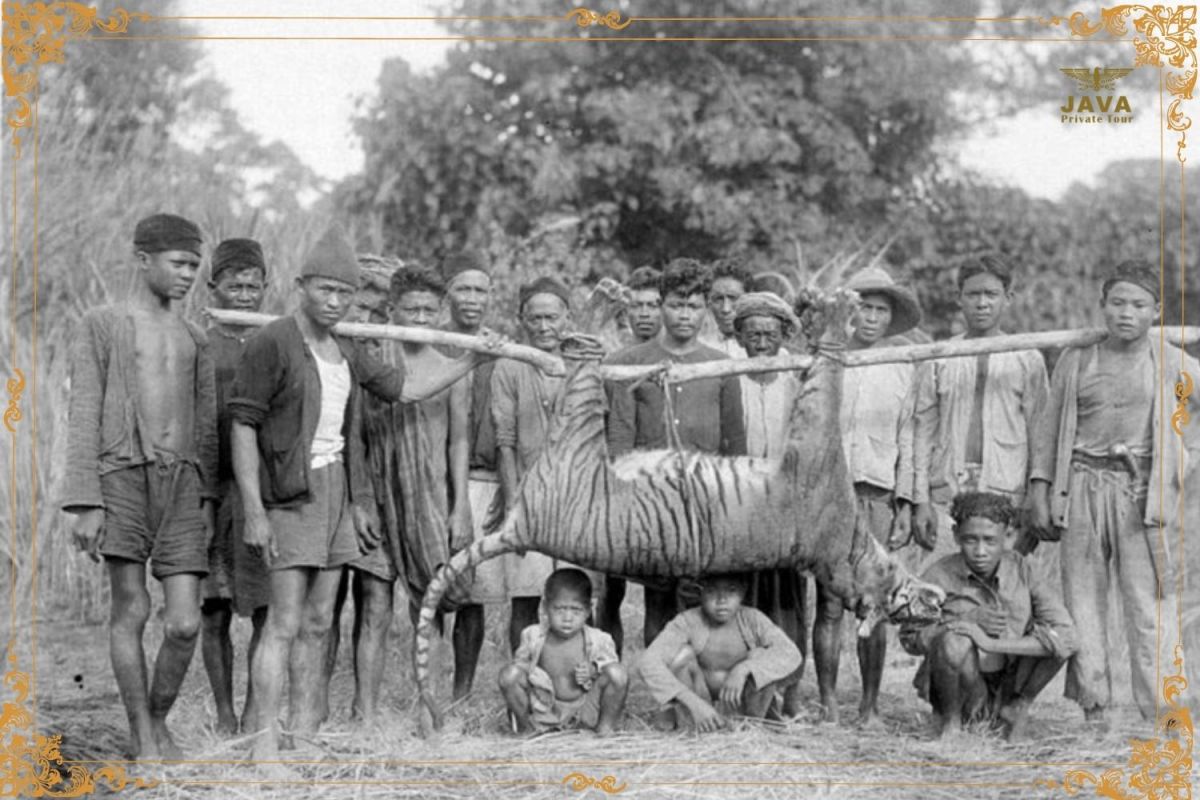
How the Javan Tiger Became Extinct
However, how the Javan tiger became extinct could have happened due to various factors. The extensive clearing of forests for agriculture and plantations during the Dutch colonial period is one of the reasons.
Wessing in another article titled “The Last Tiger in East Java: Symbolic Continuity in Ecological Change,” 1995, mentions that the opening of forests for plantations in the mid-19th century led to population displacement and ecological impacts. The use of weapons to kill tigers and their prey further accelerated the disappearance of tigers from the remaining forests in Java. Reports of tigers preying on livestock and even killing humans also increased.
In 1822, the colonial government was forced to employ people to hunt tigers. In the 1940s, it was estimated that there were only 200 to 300 Javan tigers left. However, in the following decades, Javan tigers seemed to disappear, hiding somewhere unknown.
The Javan tiger was declared extinct by the International Union for Conservation of Nature (IUCN) in 2003, following the earlier extinction of the Bali tiger (Panthera tigris balica). The Javan tiger is one of nine tiger subspecies in the world. Along with the Bali and Sumatran tigers, the Javan tiger is one of the three native Indonesian tiger subspecies.
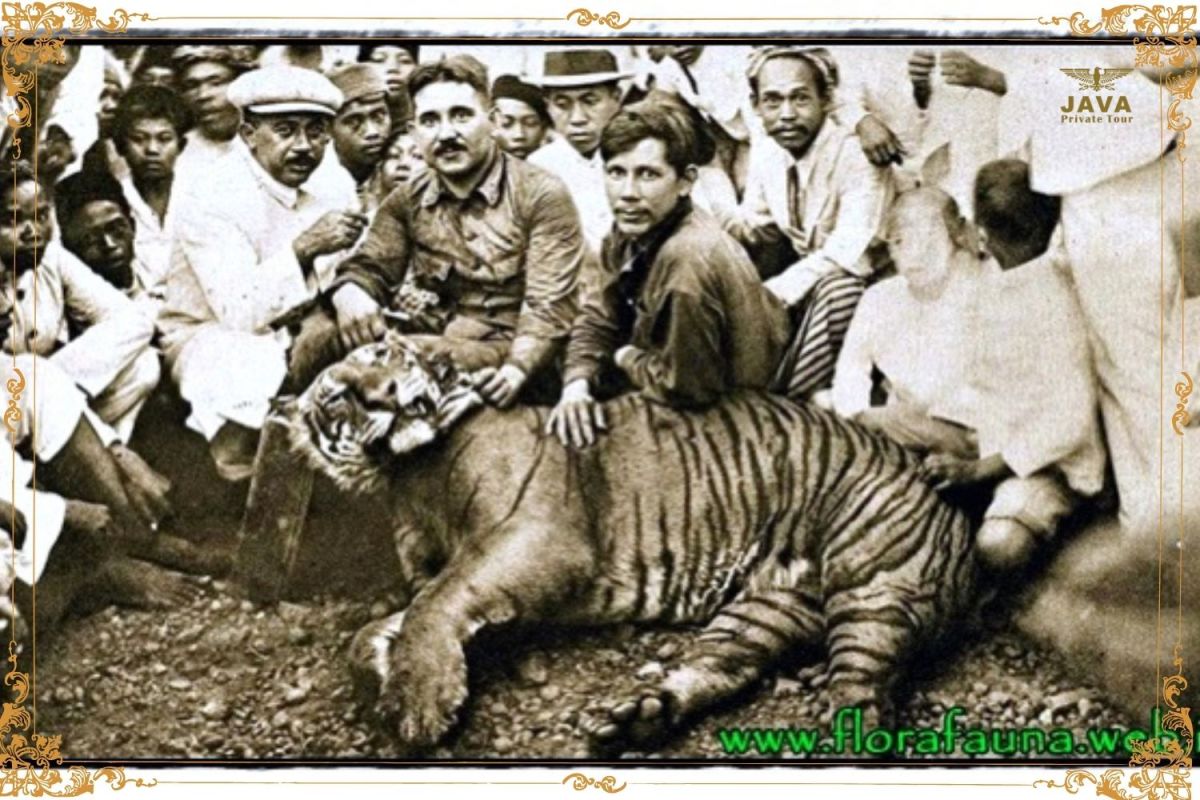
Java Private Tour: Your Gateway to Javanese Culture
As we reflect on the legacy of the Javan tiger and the tradition of Rampogan Macan, let us not forget the rich tapestry of Javanese culture waiting to be explored. At Java Private Tour, we offer more than just sightseeing; we provide immersive experiences that delve into the heart of Java’s history and heritage.
Why choose Java Private Tour? Our team of knowledgeable guides, fluent in English and steeped in local lore, ensures that every journey is both enriching and enjoyable. From flexible itineraries to personalized service, we tailor each tour to suit your preferences, ensuring a seamless and memorable experience.
Whether you’re a first-time visitor or a seasoned traveler, let Java Private Tour be your guide to the wonders of Java. Discover the hidden treasures of this enchanting island with us and embark on a journey of discovery unlike any other.
Experience the magic of Java with Java Private Tour – where every moment is an adventure, and every destination is a discovery. You can simply BOOK HERE and embark on the journey of a lifetime today!
You May Also Like
 Sex Education in Javanese Culture: The Gowok Tradition
Sex Education in Javanese Culture: The Gowok Tradition
 Cockfighting Culture, A Timeless Tradition in Java and Bali
Cockfighting Culture, A Timeless Tradition in Java and Bali
 Unveiling the Joy of Liwetan: A Culinary Tradition of Togetherness in Java
Unveiling the Joy of Liwetan: A Culinary Tradition of Togetherness in Java
 The Mystical Dance of Rain Shamans in Java: A Journey Through Time and Tradition
The Mystical Dance of Rain Shamans in Java: A Journey Through Time and Tradition
 Celebrate Cap Go Meh 2024 in Java Island: A Vibrant Blend of Tradition and Festivity
Celebrate Cap Go Meh 2024 in Java Island: A Vibrant Blend of Tradition and Festivity

